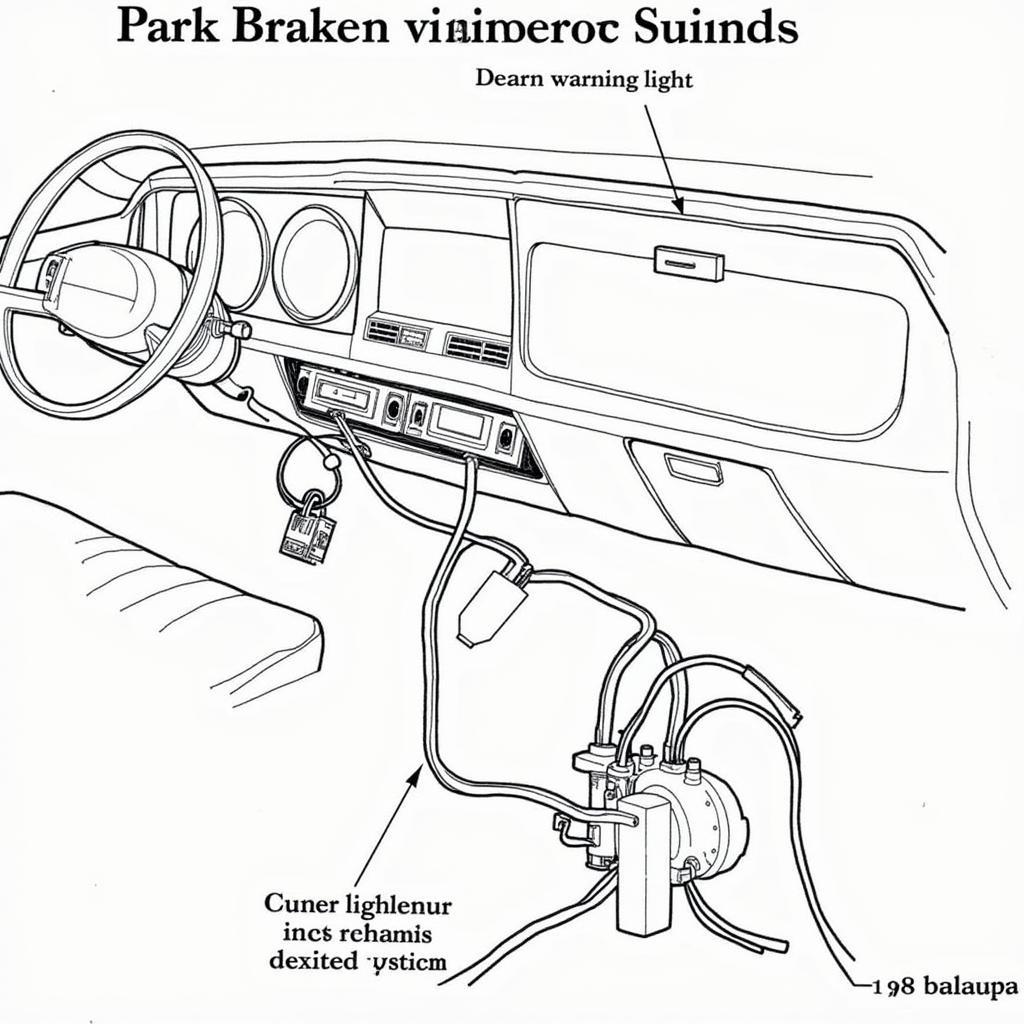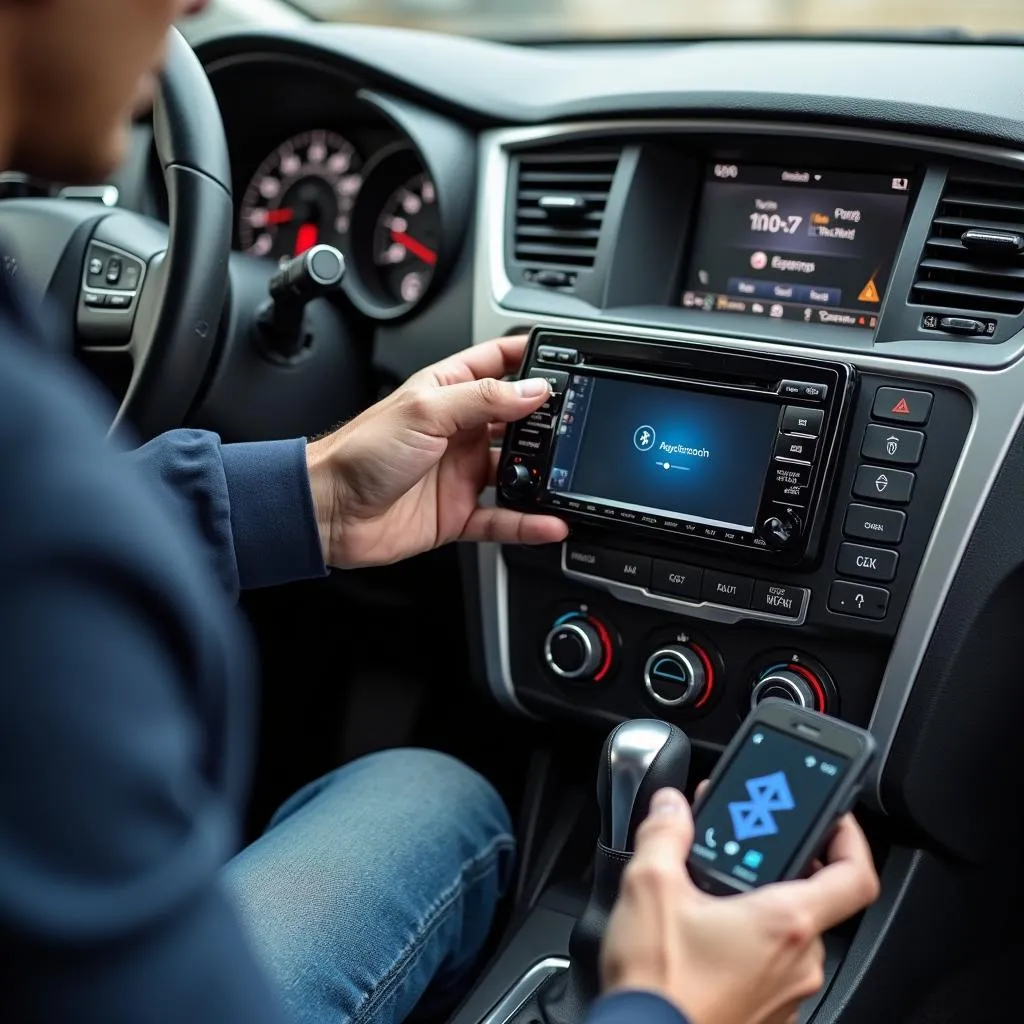Experiencing both the oil pressure and brake warning lights illuminated on your 1984 Porsche 911 Carrera can be a nerve-wracking situation. However, it’s crucial to remember that these warning lights don’t always signify catastrophic engine failure. This article will guide you through common causes and troubleshooting steps to help you diagnose the issue.
While it’s tempting to assume the worst, the simultaneous illumination of these warning lights often points to a less severe problem, particularly in the 911 generation of this era. Let’s delve into the potential culprits:
Understanding the Warning Lights
Before we dive into diagnostics, it’s essential to understand what triggers each warning light:
- Oil Pressure Warning Light: This light indicates a drop in oil pressure below the safe operating range for your engine.
- Brake Warning Light: This light can signify a few different issues, including low brake fluid, a problem with your braking system, or an issue with the parking brake.
Common Culprit: Low Brake Fluid
In many cases, especially with an older 911 Carrera, the simultaneous illumination of both the oil pressure and brake warning lights points to low brake fluid. The brake fluid reservoir in these cars also houses the oil pressure warning light sensor. When the brake fluid level drops, it can trigger both warning lights.
Troubleshooting Low Brake Fluid:
- Check the Brake Fluid Level: Park your car on a level surface and locate the brake fluid reservoir. It’s typically a translucent container with a black cap, positioned on the driver’s side of the engine bay.
- Add Brake Fluid If Necessary: If the fluid level is low, carefully add the correct type of brake fluid for your 911, as specified in your owner’s manual.
- Inspect for Leaks: While adding fluid, carefully examine the area around the reservoir and under your car for any signs of brake fluid leaks.
 1984 Porsche 911 Carrera Low Brake Fluid Reservoir
1984 Porsche 911 Carrera Low Brake Fluid Reservoir
Other Potential Causes:
If checking and topping up the brake fluid doesn’t resolve the issue, there could be other underlying problems:
Faulty Oil Pressure Sensor:
Like any sensor, the oil pressure sensor can fail, sending a false signal to your dashboard.
Troubleshooting a Faulty Oil Pressure Sensor:
- Visual Inspection: Locate the oil pressure sensor, typically found on the engine block. Look for any visible damage, loose connections, or oil leaks around the sensor.
- Testing with a Pressure Gauge: For accurate diagnosis, it’s recommended to connect a mechanical oil pressure gauge to verify the actual oil pressure in your engine. This should be performed by a qualified mechanic.
Worn Oil Pump:
Over time, your oil pump can wear out, leading to reduced oil pressure and triggering the warning light.
Wiring Issues:
Electrical gremlins can also be the culprit. Damaged wiring or loose connections can disrupt signals from the sensors to the dashboard.
Serious Engine Problems:
While less likely, significant engine problems like bearing wear or a failing oil pump can also lead to low oil pressure.
When to Seek Professional Help
If you’re uncomfortable performing these checks yourself or if the warning lights persist after addressing potential causes, it’s essential to seek professional help. A qualified Porsche mechanic can accurately diagnose the issue using specialized tools and experience.
“Ignoring warning lights, especially those related to oil pressure or brakes, can lead to costly repairs or even dangerous driving situations,” advises Peter Zimmerman, a veteran mechanic specializing in classic Porsches. “It’s always better to err on the side of caution and consult a professional.”
Conclusion
Seeing the oil pressure and brake warning lights illuminate on your 1984 Porsche 911 Carrera can be concerning. Often, the cause is low brake fluid, a relatively simple fix. However, if the problem persists, it’s crucial to investigate further, as it could indicate a more serious issue. Remember, timely diagnosis and repair are key to keeping your classic Porsche running smoothly and safely for years to come.


